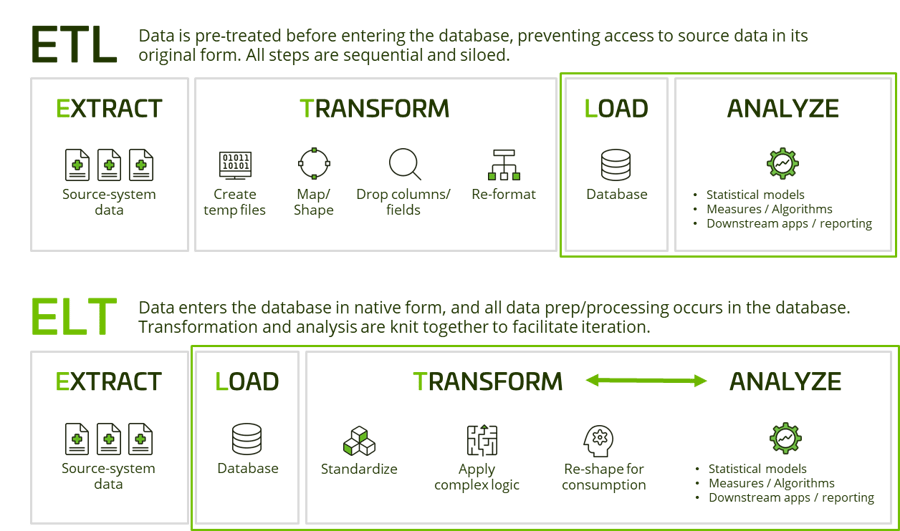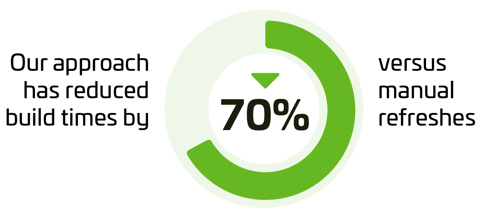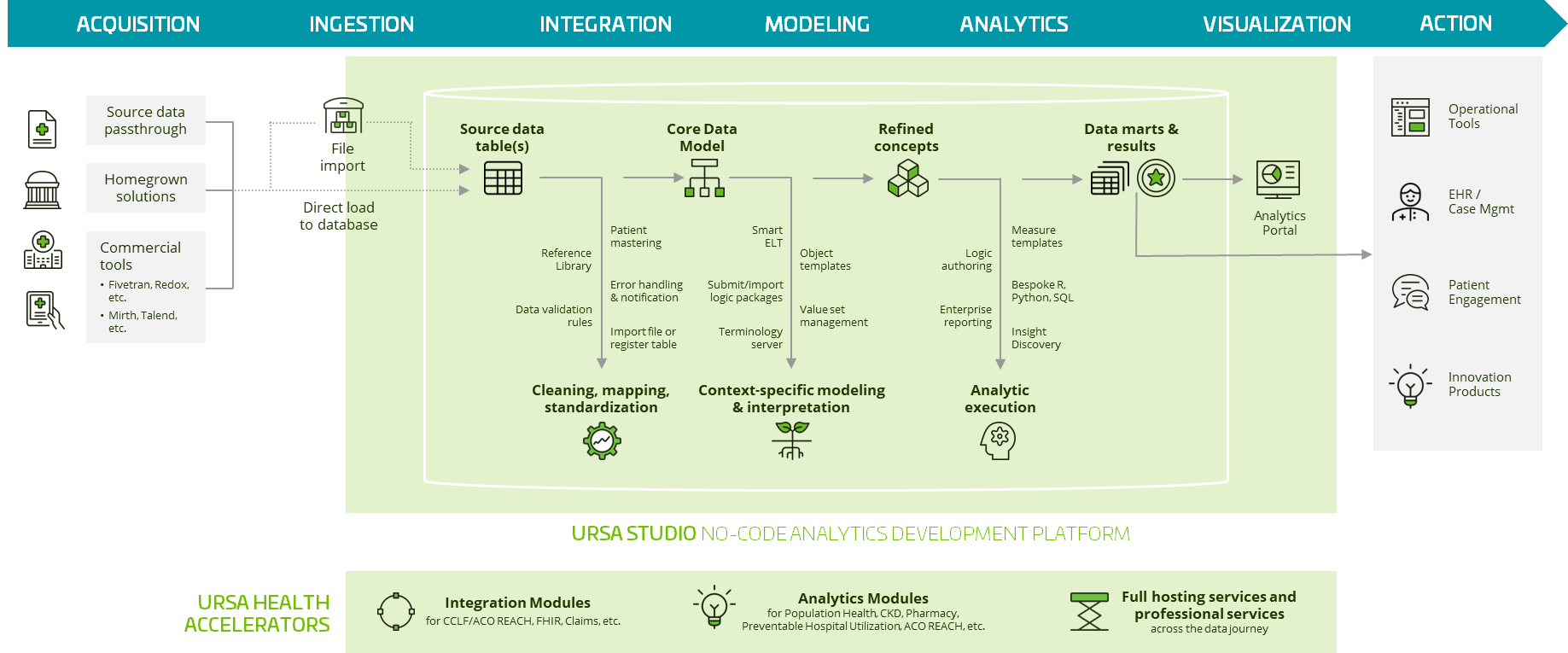
Ursa Health’s approach to interoperability
We believe in the power of SQL
Ten years ago, it looked as if we'd need Hadoop or NoSQL to me—et the challenge of big data, but we now know that the relational database can handle data at scale. Pick any relational database you believe in — we support them all.
Ursa Studio’s no-code platform grants the full transformational power of SQL to our users. The relational database can do nearly anything you need it do — no need to pull out data to external tools to transform.
ELT is a better approach for healthcare data analytics than ETL
Ursa Studio is built to pair with whatever loading tools you already have in place. When it comes to getting your data into database tables, we believe the loading tool should simply import the data in its truest original form. This approach is called ELT (extract, load, transform) because all the transformation — cleaning, conformance, and enrichment — can occur in the database after the load has finished, using SQL.
ELT’s benefits for healthcare

We help you focus on what matters
Using a hierarchical data model means keeping track of the network of dependencies between upstream and downstream EDW tables so that refreshes can be executed in the correct sequence.
With Ursa Studio, analysts without programming expertise can successfully build out and refresh the relevant data tables, and your team can shift their time from documenting the dependency tree to the intellectual, creative build of the logic.

Ursa Studio makes this process easy:
The parts are greater than the sum
Each step in the process creates value-added output. With Ursa Studio, these intermediate data products are not locked away by black-box policies or in uninterpretable, proprietary states.
With these complex calculations simplified, your team can shift their time from documenting the dependency tree to the intellectual, creative build of the logic.
These calculations can:
Your environment, your choices
Whether you're building your own pipelines or using off-the-shelf software, the most maintainable way to work with data is to create tables within your database. Data should only be shipped off through other pipelines or black-box tooling as a last resort.
Ursa Studio works by creating a hierarchical data model within your database, then progressively creating tables within that database. This structure facilitates seamless integration with your existing data assets and technology investments and promotes reusability, accuracy, consistency, and overall performance.

Want to learn more about Ursa Studio?
We've got more to tell you. Use any of the following links to learn more about our:
- Healthcare data integration
- Healthcare data model modeling
- Healthcare analytics development
- Healthcare business intelligence
- Healthcare reference library
- Master data management
- Native ELT / Interoperability
- Security
